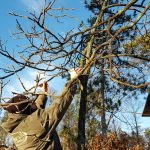Fall Color Science
Fall Color Science
When I think of fall in the Northwoods I envision the forests glowing with multicolored leaves. Fall color at its peak is indeed a spectacle to behold but few people ever dig deep to ponder what precipitates such a dramatic change every year. Depending on the tree species the color display will vary but the underlying color transformations are caused by the same factors.
To gain insight into the factors at play in this annual process let’s go over the 3 different pigments responsible for the color palette. Chlorophyll gives trees their green color throughout the growing season. Carotenoids produce the yellow, orange, and brown colors and Anthocyanins are typically responsible for the pink, red, purple, and blue hues. Chlorophyll and carotenoids are present in the leaf throughout the growing season and anthocyanins are produced in the fall. As the length of day starts to wane in the fall the production of chlorophyll declines which begins to reveal the carotenoids. Weather conditions also plays a role in the color display. The red tones are most affected by weather because they are influenced heavily by sugar production and cooler temperatures. The most dazzling displays occur when warm sunny days are followed by cool nights. Warm sunny days produce a lot of sugar in the leaves and cool nights start to gradually shut down leaf veins trapping sugar in the leaves. Sugars react with anthocyanins to produce vivid red colors. Soil moisture can play a role if drought is experienced and chlorophyll production declines early.






